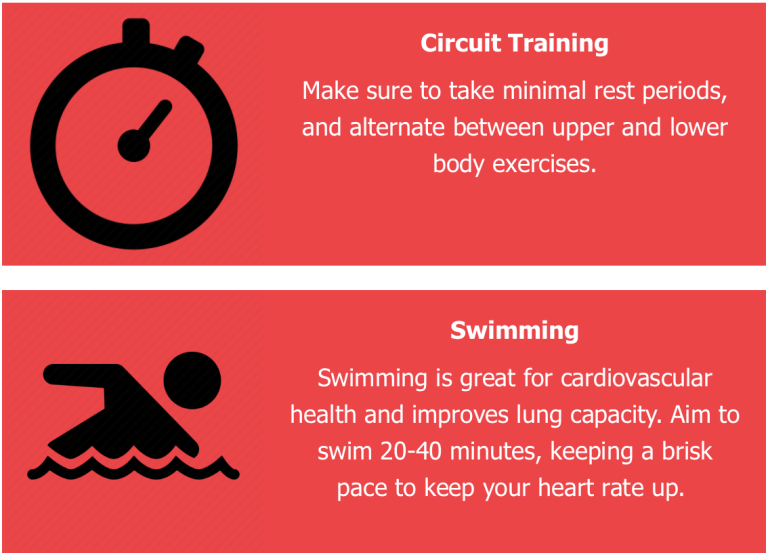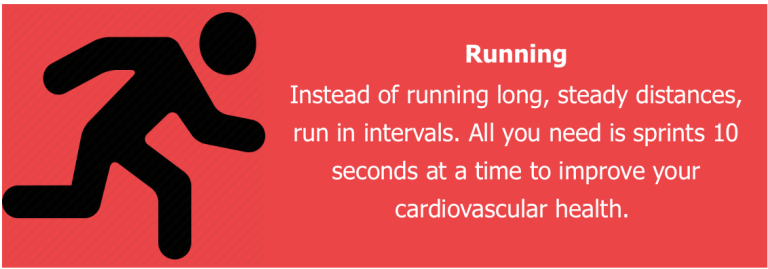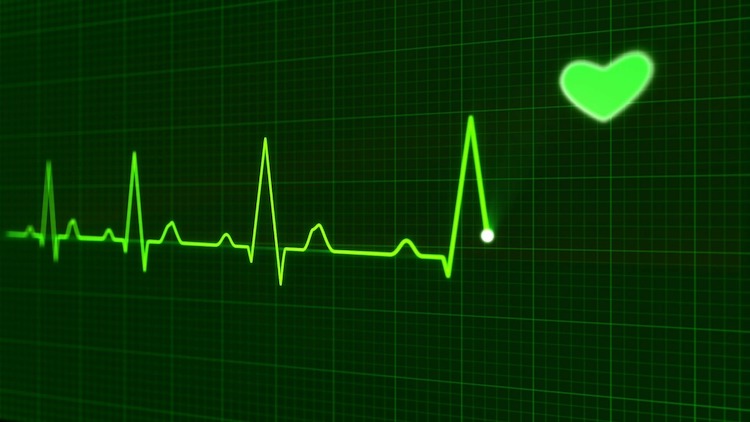While inactivity is a major risk factor for heart disease, luckily beginning an exercise program at any age reverses some of that risk. Genetically humans are predetermined to exercise. We evolved to run from danger at fast speed, hunt for our food, and reach for the fruit on trees. A sedentary lifestyle, adopted by 60% of Americans, goes against our genes. Practically every study on the planet shows that the combination of inactivity and wrong foods is causing us to die early. The association between regular exercise (anywhere from 10 to 90 minutes or more) and heart function is a fascinating topic for future reading. One thing to remember is that the heart grows in size, and pumps more blood in any given beat in response to regular exercise. It becomes more adaptable, smarter. And a smarter heart is what you should aim for.
Here’s what exercise does:
- Decreases Cardiovascular Heart Disease
- Decreases High Blood Pressure
- Decreases Body Fat
- Improves Metabolic Processes (the way the body breaks down and builds necessary substances)
- Improves Oxygen Delivery Throughout the Body
- improves Sense of Well-Being
- Improves Strength and Endurance
(adapted from Exercise In-depth Report)
Initiating an exercise program can be daunting, and maintaining one even more challenging. We’ve listed some in section below. Find one that matches your lifestyle, and stick to it for a month or more. Then change to a different exercise if you get bored. For those of you who will never exercise, there is still hope. It’s in the form of NEAT. What is that? NEAT is energy expended for everything we do that is not sleeping, eating or sports-like exercise. According to Dr. J. Levine from Mayo Clinic, typing, fidgeting, standing for 5 minutes every hour, or walking for 10 minutes at lunch, simply put, can change your energy expenditure by as much 2000 kcal per day. Dr. Levine and colleagues have shown that amongst individuals with same caloric intake and size, their metabolic activity can substantially vary based on the level of NEAT. They believe raising NEAT leads to reduced occurrence of the metabolic syndrome, cardiovascular events, and all-cause mortality. And they are pushing the medical community to incorporate NEAT counseling in management of obesity and cardiovascular disease. How can it be incorporated into a weight loss program for example? NEAT can be applied by being upright, ambulating, and redesigning workplace and leisure-time environments that promote NEAT.
This concept is not new but has regained more attention since the flourishing market of wearable activity trackers (WAT). In my opinion, a wearable tracker is the best invention for enhancement of physical activity. My WAT of choice is the Apple Watch, which everyone knows I love so much. Of course it has many wondrous capabilities, but by far my favorite feature is the activity monitor. The watch alerts me on my activity progress of the day and week, adjusts my move goal calories accordingly, tells my heart rate at rest and during exercise, and records my steps for the day. It also alerts me to stand for 5 minutes after an hour long sit– most critical for leveraging my energy expenditure. Research strongly corroborates that this tiny device on my wrist, will increase my metabolic rate by increasing my non-exercise activity thermogenesis, NEAT. I see every trainer, nutritionist, physical therapist, and exercise guru wearing one of these devices, and I am hearing that they are recommending all their clients to purchase one before the start of their designated exercise or weight loss programs.
Our stance is the same. For a healthy heart and metabolism, get a WAT, get up & move!
Test Your Knowledge
Do I have to do strenuous cardiovascular training for a healthy heart?
Can exercise raise my good cholesterol (HDL)?
Can having a stand up desk help reduce calories?
What is the number one cause of death in the US?
Answers: YES, NO, YES, YES, HEART DISEASE




